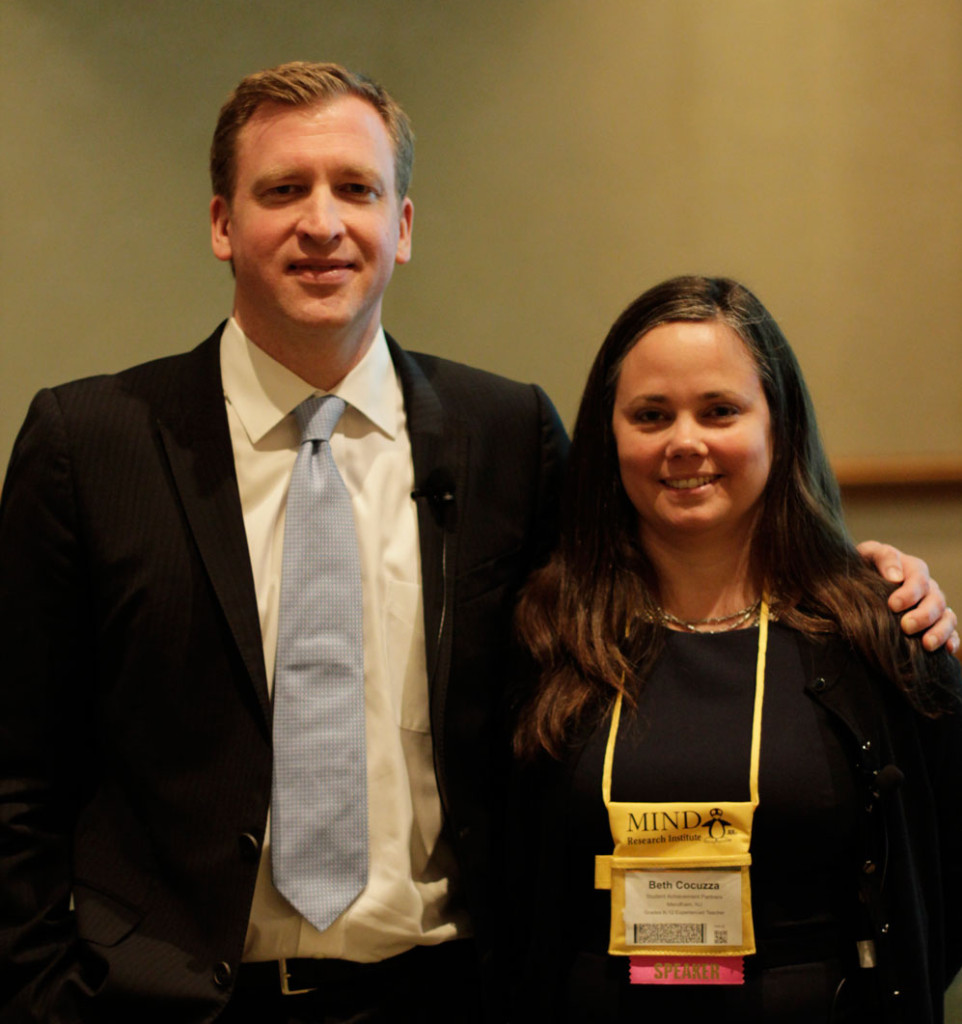I was looking forward to this session since I saw that Jason Zimba would be presenting at NCTM this year. He’s one of the lead writers of the Common Core State Standards for Mathematics and I was curious to see what light he would shed on the standards. Zimba and his co-presenter Beth Cocuzza gave a brief history of the CCSSM and how the standards were created. They also highlighted some of the resources available on their site for evaluating CCSSM alignment. My biggest take away was the free resources provided at http://www.achievethecore.net where you can find most of the resources from their session.
Here are my 3 favorite resources from their site:
1) Summary of the shifts (focus, coherence, and rigor). This is helpful for parents, teachers, coaches, and administrators to understand how Common Core is different. The rest of the resources on the site typically connect back to one of the three shifts. Zimba explained that the focus of the standards gives the space for the eight mathematical practice standards to be addressed. This made a lot of sense. He also explained that the coherence across grade levels meant that each year students should be adding on to their current understanding of topics rather than seeing ideas as brand new. The summary of the shifts can be found here.
2) Practicing with the Shifts handout provides exercises for better understanding each shift. In the focus exercise you are asked to narrow down the focus of grades K-8 by eliminating 1 out of 3 provided topics for each grade level. There’s an answer key provided here. In the coherence exercise you essentially go on a “standards hunt” to find all the standards that relate to a topic across grade levels. Fractions is the specified topic in the exercise, but I could see this being done with any topic: addition, geometry, measurement, etc. This is a valuable exercise in collaborative teams (or across grade levels) to get familiar with the coherence within and across grade levels. There’s also a section where you’re able to explore what’s meant by rigor in the CCSSM. The practice handout can be found here.
3) Focus by Grade Level documents. These documents provide a 2 page synopsis of individual grade levels. Each document defines the major, supporting, and additional clusters (of standards) for the grade level. It’s recommended that 65 to 85 percent of time be spent on the major clusters at each grade level. Also, the required fluencies for each grade level are highlighted. The back shows the clusters of standards that lead to 8th grade algebra. I really like these documents because they give a brief, but concise snapshot of each grade level and also inform teachers where their instruction fits within the big picture of the standards. The Focus by Grade Level documents can be found here.
Overall, the presentation was very informative. It didn’t get into the day to day details of what the standards look like in practice, but provided some excellent resources for anyone looking to better their understanding of the structure and purpose of the standards. Also, there are many other resources available at http://www.achievethecore.net.


